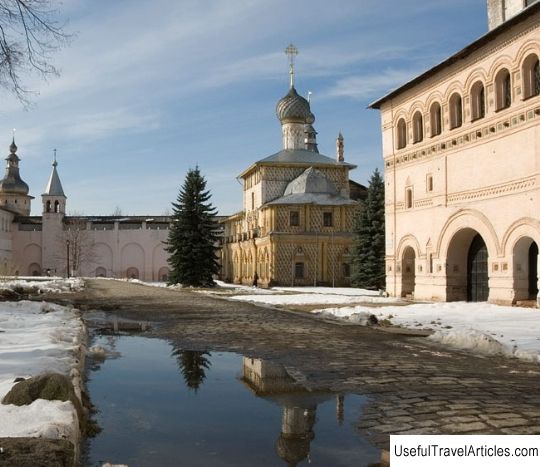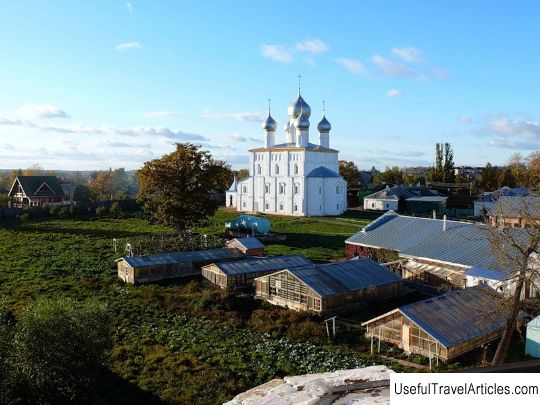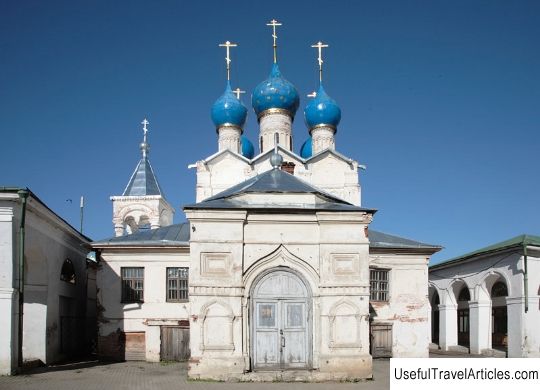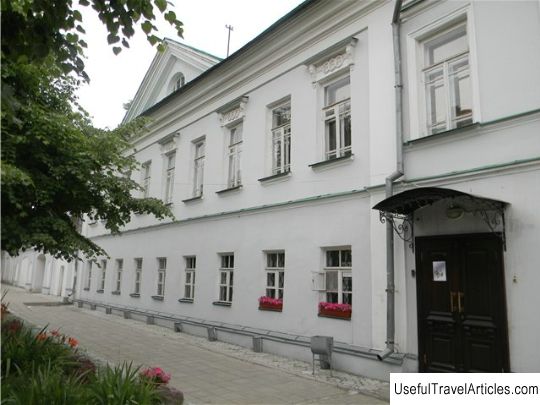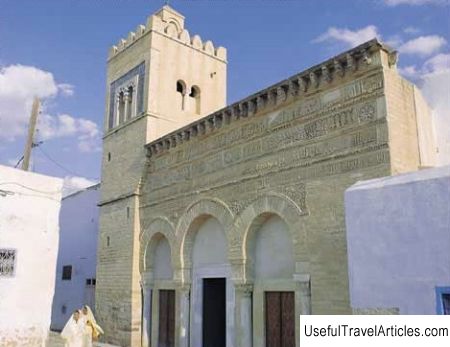Church of the Savior on the Senyakh of the Rostov Kremlin description and photos - Russia - Golden Ring: Rostov the Great
Rating: 8,7/10 (311 votes) 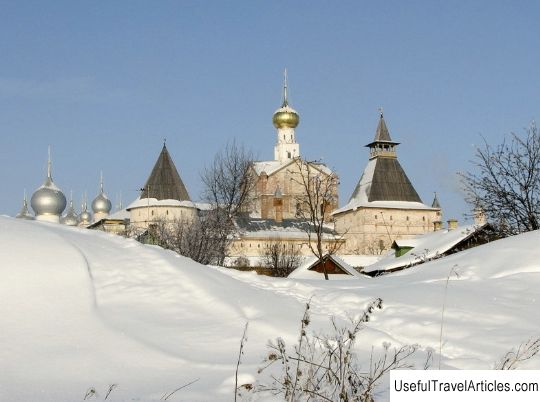
Church of the Savior on the Seny of the Rostov Kremlin description and photos - Russia - Golden Ring: Rostov the Great. Detailed information about the attraction. Description, photos and a map showing the nearest significant objects. Photo and descriptionThe Church of the Savior on Senyi was built in the middle of 1675. He is a representative of the house churches of the Rostov bishops. The temple stands on a high basement and differs significantly from the temples built at that time by an eight-slope covering. The interior design of the Church of the Savior is especially striking, because it is one of a kind, decorated with an arcade that rests on high gilded pillars. The main entrance leads to the temple from the side of a huge gulbishcha connecting the church with the pre-existing living quarters belonging to the metropolitans. There is a mural on the walls of the temple, which was made around 1675 by a priest from Rostov named Timofey, as well as masters from Yaroslavl - Fedor and Ivan Karpov, Dmitry Grigorievich. At the end of 1893, the funds of state councilor V.I. The Queen's Church was completely renovated, with the work carried out by five craftsmen from the village of Mstera; V.V. was appointed the head of the work. Lopatkov. In the period between 1978 and 1995, the painting of the Spassky Cathedral was completely restored by V. Krivonosov, E. Chizhov, A. Kornilov, V. Vlasov, K. Gribanov, V. Zyakin and some others. On the central dome there is an image of "Fatherland", in the space between the drums there are depicted six archangels with prophets and mirrors in medallions with prophetic scrolls. It also depicts sails, which are presented in a cruciform shape and are made especially large; next to it are the equally large figures of the evangelists. The lunettes and vaults represent the main events from the Gospel. The walls were broken using cut-outs into six identical tiers, from 1.5 to two meters high. In the 27 upper hallmarks of the two upper tiers, the earthly life of Jesus Christ is perfectly illustrated. The two uppermost story tiers, which begin at the height of the highest part of the salt, relate to the theme of the Passion of Christ. The lowest is the sixth tier - ornamental, which consists of a wide valance and a narrow frieze. The cycle "Passion" was written with great feeling, especially for the scenes: "Judgment over Christ", "Bringing to Pilate", "Procession to Calvary". The artists conveyed the inherent drama of the evangelical events through images overflowing with mental fortitude and inner strength and firmness; in all the scenes described, you can easily see hints of an "unfair trial" over Nikon. One of the most successful murals is The Last Judgment, which occupies the entire part of the western wall. The artist perfectly coped with his task, professionally placing on the wall plane the most varied and numerous scenes and attributes of the aforementioned Christian plot, which are well described in icon-painting Russian originals. The artist has built the most complex composition along five horizontal and vertical axes. With the most melodious rhythms, which are harmoniously distributed with the help of color spots, the master achieved a decorative and compositional unity, according to which the picture is perfectly perceived not only as a whole, but also in its components. On the wall, from the east, there are images, placed in several registers, which form some kind of iconostasis. The main part of the iconostasis, or Deesis, is clearly repeated on the frontal part of the solea. In the space between the colonnade of the altar barrier and the colonnade of salt, there are several frescoes selected from the Old Testament and the Gospel. From the south is the "History of the Trinity", and from the north - "Nativity of the Virgin" and "Conception of Anna". On the wall surfaces of the apse are depicted with two registers of saints. At the very top there is depicted Bishop Leo, Epiphanius of Cyprus, Cyril, the patriarchs Nikofor, German, Great Athanasius, Melentius; in the lower tier - Metropolitans Jonah, Peter, Sylvester, Pope of Rome, Alexy, Gregory, Pope Philip. In the space of the altar there is an image of "Christ the Slain Lamb". Here you can also see the "Last Supper" and "Washing of the feet".      We also recommend reading Kunsthistorisches Museum description and photos - Austria: Vienna Topic: Church of the Savior on the Senyakh of the Rostov Kremlin description and photos - Russia - Golden Ring: Rostov the Great. |
